As one of our most-loved cuisines, it’s no surprise that Italian restaurants are a dime a dozen all across the country. However, a chicken parm special and some Sinatra playing in the background doesn’t always guarantee that you’re getting an authentic Italian restaurant ~experience~.
Luckily, this guide will teach you how to distinguish real Italian restaurants from those that are as fake as a knockoff Prada purse. So read on, pasta lovers.
1. They put balsamic vinegar on the caprese
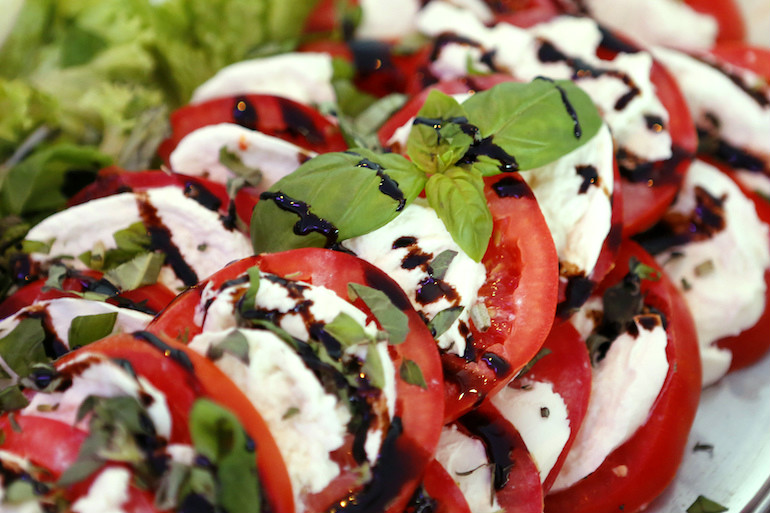
Photo courtesy of Flickr user Tim Reckmann
Balsamic has a time and place (like in this quick and easy chicken recipe) but not in caprese salads. The tangy vinegar will overpower this delicate dish of mozzarella, tomatoes, and basil. Instead, finish off your caprese like they do in Italy – with a drizzle of olive oil, a sprinkle of salt, and a few grinds of pepper.
BTW, the same goes for bruschetta (which is pronounced bru-ske-ta).
2. There’s an abundance of huge, fluffy breadsticks
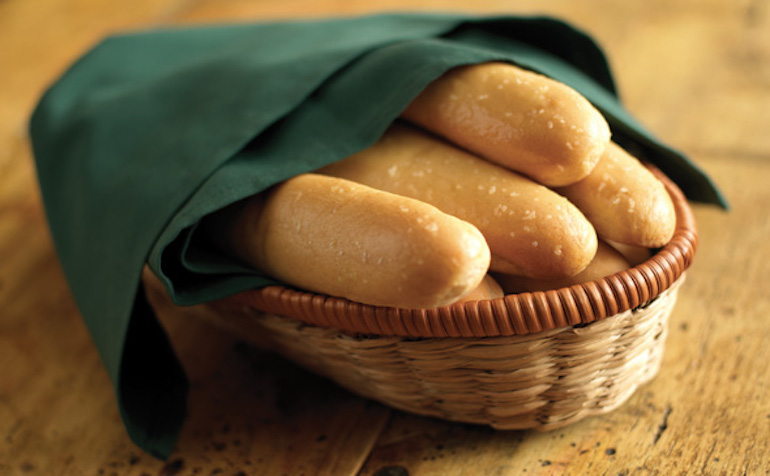
Photo courtesy of olivegarden.com
Yeah, they’re a great way to carb-o-load, but that bottomless basket of soft and doughy breadsticks is the furthest thing from authentic. True Italian breadsticks, called grissini, are long and skinny with an audible crunch and satisfying snap.
3. The meatballs are the size of softballs
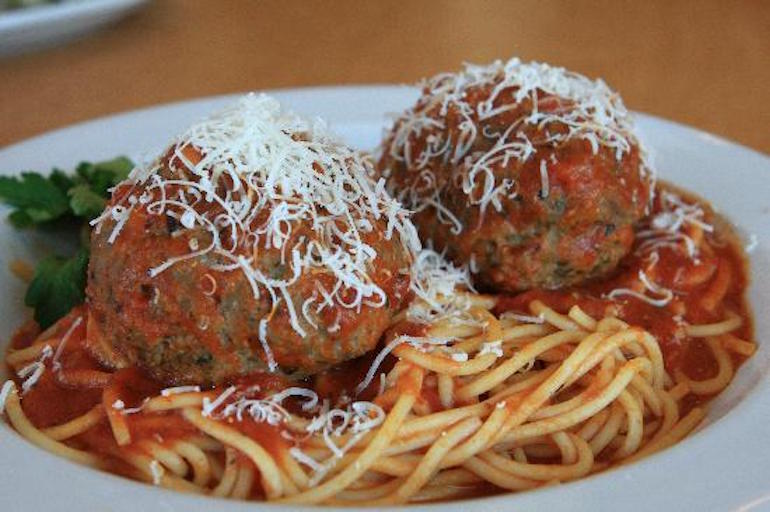
Photo courtesy of tripadvisor.com
After years of pondering, I still don’t understand why self-proclaimed Italian restaurants often choose to serve one or two giant-ass meatballs instead of a few more manageable, golfball-sized ones. I don’t know about you, but I prefer not to have to use pitchfork to eat my meatballs, thank you very much.
4. Spaghetti is featured in every pasta dish
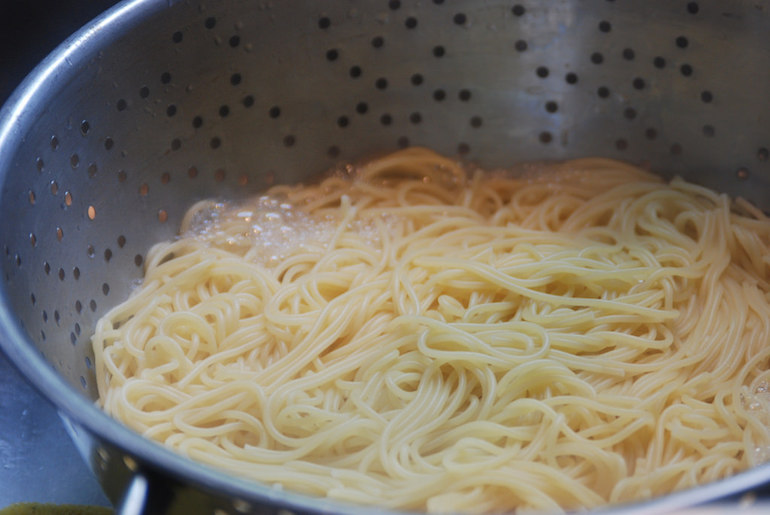
Photo by Judy Holtz
When it comes to different pasta dishes, one pasta shape does not fit all. For a hearty sauce, like a Bolognese or ragù, you want a substantial pasta shape that will hold up to the sauce, such as rigatoni or wide ribbons of tagliatelle. Save the spaghetti for carbonara, capeesh?
5. The sauce doesn’t come mixed into the pasta
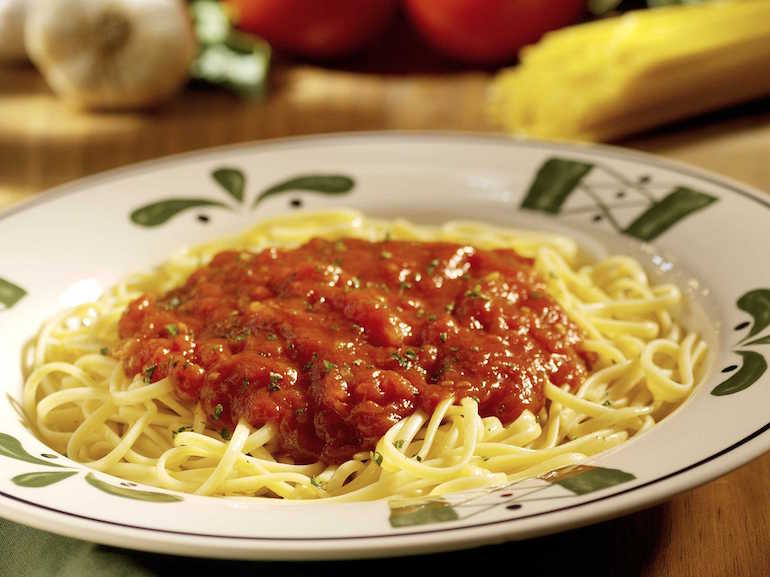
Photo courtesy of splashfood.com
It may not sound like a major faux pas, but one of the most notorious signs of a fake Italian restaurant is when your pasta arrives topped with a puddle of sauce that hasn’t been properly mixed in. This practice drowns the top layer of pasta and leaves the bottom layer dry and flavorless.
At authentic Italian restaurants, the chef will toss your pasta with the sauce, along with a splash of some of the starchy water left over from cooking the pasta, which ensures that the sauce perfectly coats each piece of pasta.
#SpoonTip: Check out this article for more pasta rules you should be following.
6. They serve dishes that combine tons of Italian-sounding ingredients
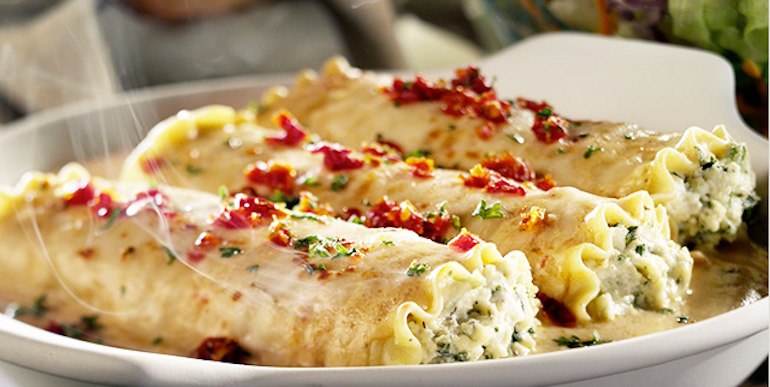
Photo courtesy of olivegarden.com
I hate to break it to ya, but the sight of your Ricotta-Stuffed Tortellini with Pesto, Prosciutto, and [insert random Italian ingredient here] would make my nonna cry. At its roots, Italian food is incredibly uncomplicated but uses the freshest ingredients and impeccable technique to make even the simplest of meals memorable.
7. Garlic bread is on the menu
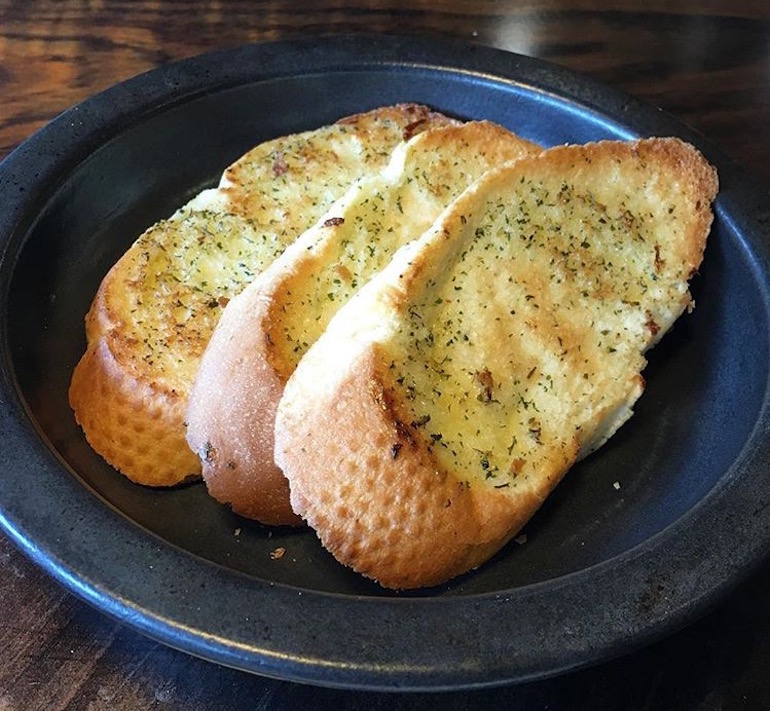
Photo courtesy of hdkhoo on Instagram
Buttery, herby garlic bread is an Italian-American invention, and its closest Italian relative is bruschetta (that’s right, not all bruschetta comes tomato-topped). To make it, you toast a thick piece of crusty bread on both sides, then rub a sliced garlic clove on the toast, drizzle with good-quality EVOO, and finish with salt and pepper.
P.S. If you find yourself at an “Italian” restaurant that puts cheese on the garlic bread, run far, far away.
8. Cheese is everywhere
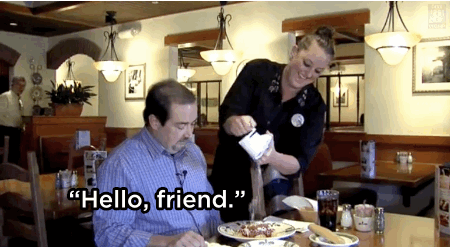
GIF courtesy of giphy.com
Cheese is delicious, and Italian cheese is some of the best in the world. But there is no need for nearly every menu item be smothered with a blanket of melted mozzarella.
Remember how the best Italian food is often deceptively simple? Believe me, if the restaurant’s food is really that good, you won’t need a search-and rescue team to find your eggplant parm hiding under all that mozz, or a hefty dusting of Parmesan on an already cheese-laden dish of carbonara.
In sum, cheese is good, but it must be used responsibly.
9. Pasta comes as a side dish
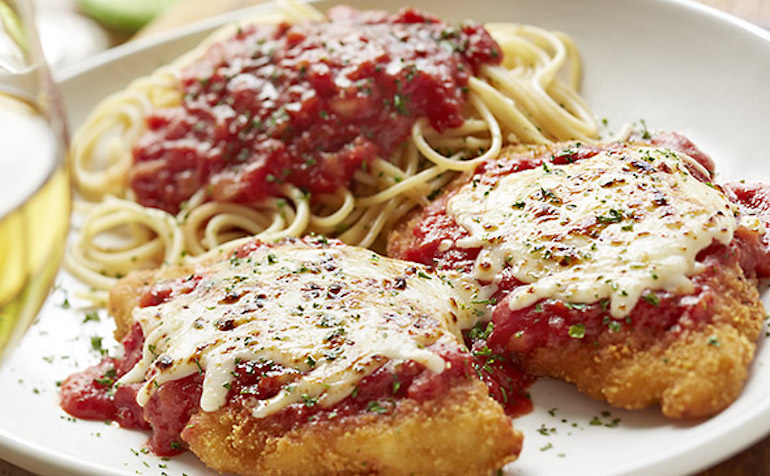
Photo courtesy of olivegarden.com
In true Italian restaurants, pasta isn’t relegated to a measly side dish. Instead, it gets the VIP treatment and is served as the first course of the meal, or primo. The meat or seafood dishes then follow as the secondo, and it’s actually traditional to serve the salad course in the middle of the meal.
10. Cappuccinos are served with dessert
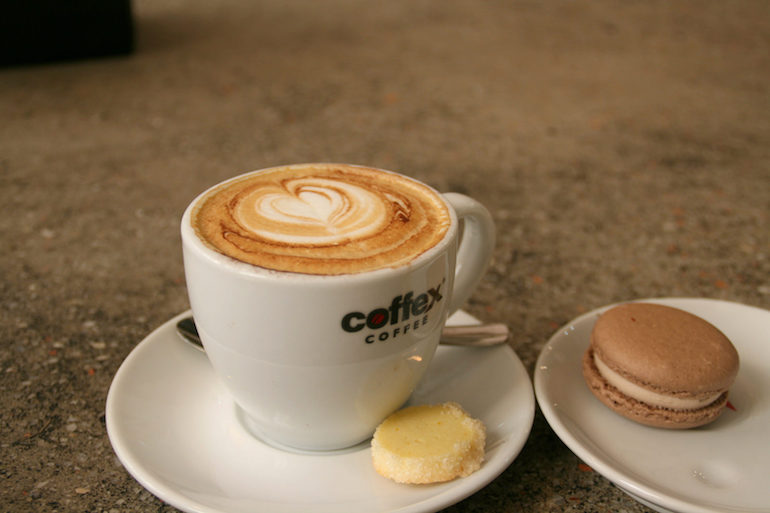
Photo by Isuann L.
In Italy, it’s blasphemous to drink a cappuccino after 11 AM; it’s strictly a breakfast drink. To end your meal like a real Italian, opt for a shot of espresso.


